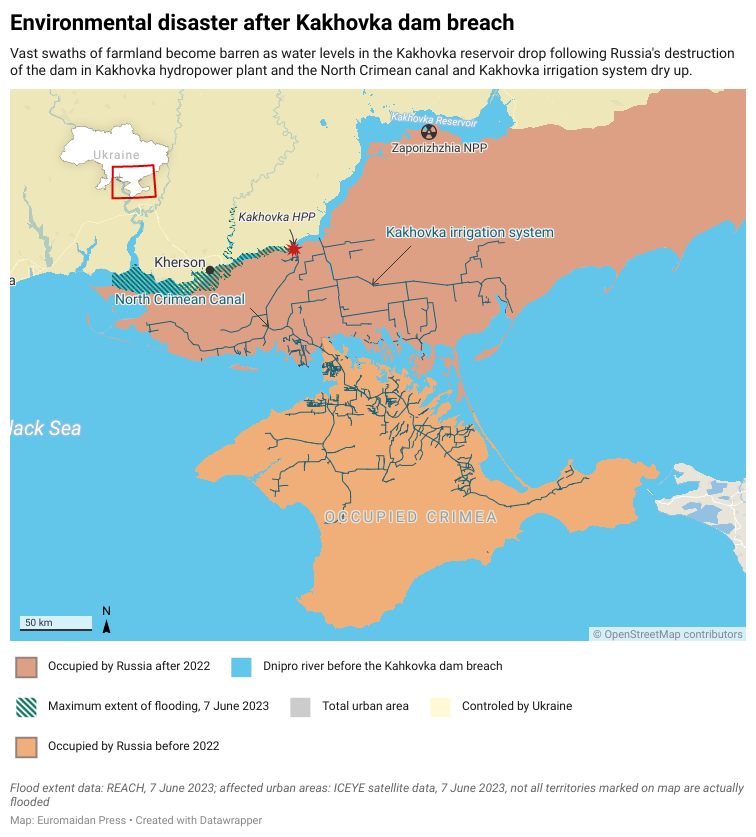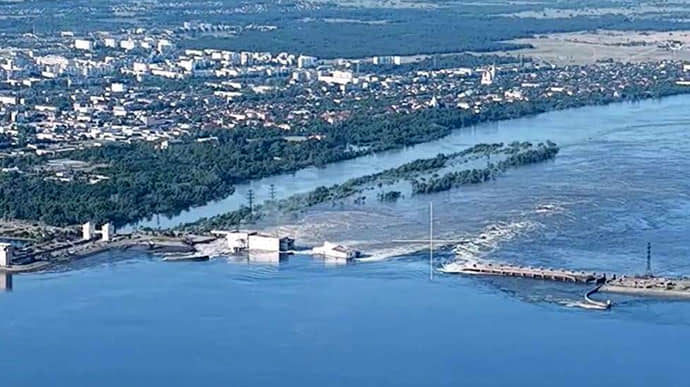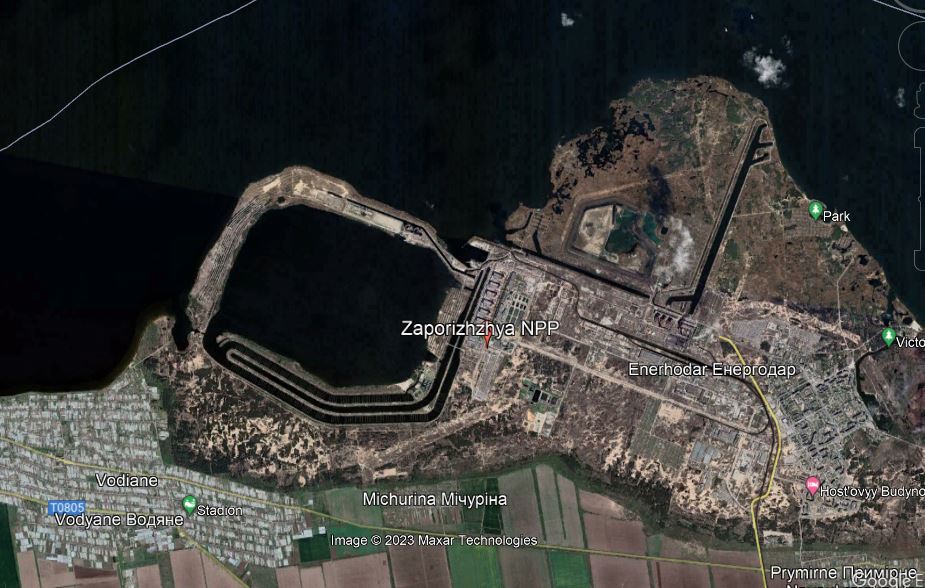



02:20 - What's the situation? That's one; second, standby, standby, all on command. Over.
02:20 - It already started here.
02:21 - Roger, roger; move out to the point, to the point, take everything.
02:21 - We can't take anything anymore.
02:30 - Emergency. Evacuation point here is finished, full of water.
02:34 - Move out to the place where you were picked up and brought back.
02:34 - Can't get out, everything is flooded.
The command to "move to the point and take everything" was given, judging by the conversation, after the dam was destroyed. And it seems that not everyone was able to "move out" because everything was "full of water." Thus, the intercepts indicate that there was a "command" from the Russian military leadership, that "evacuation points" were planned, and that an "emergency" occurred. This evidence may indicate the Russians' intention to blow up the Kakhovka HPP, the journalists write. As well, the journalists found an engineer at the Kakhovka HPP who was forced to continue working at the power plant during the occupation until September 2022. The man's name was not disclosed for safety reasons. According to the worker, since the beginning of the occupation, sappers from the Russian army have been living at the hydroelectric power plant, and they had access to all the premises of the building: "The sappers lived in a bomb shelter right at the HPP. We had a bomb shelter under the control panel, and a team of sappers with dogs lived there, because there were locker rooms, showers, refrigerators, and everything you need. We can say that they were an 'elite unit' with such conditions." The HPP engineer said that during his stay at the station, workers were not allowed to enter a number of rooms. Among them were the plant's underground premises."The HPP's pitches are located at minus 7 meters. I do not exclude that at that time, there was already something secret there. I didn't personally see how the explosives were brought there, but judging by the nature of the damage to Kakhovka HPP that we all saw, this is one of the likely places where the explosion could have occurred," says the HPP employee.The journalists also talked to Ukrainian military sapper Mykola Shchehelskyi:
"All the mechanics of blowing up the hydroelectric power plant was done according to the textbook, on where to put the explosives. It was all done from the inside. The dam was definitely prepared to be blown up. The explosion did not go outside, because such operations are done by helping the water do all the work. A few cracks in the dam - and it will do everything by itself."The 205th Brigade includes, among others, an engineer battalion (38 soldiers). The Kakhovka HPP's destruction and the Kherson Oblast's subsequent flooding have led to a humanitarian catastrophe. The flooding has displaced thousands of people, destroyed homes and infrastructure, and caused significant economic damage. The Ukrainian government and international organizations are now working to provide aid to the affected areas and to hold those responsible accountable.
Related:
- Evidence suggests Russia destroyed Kakhovka dam from within – NYT
- No, the Kakhovka dam could not have collapsed on its own
- Earwitnesses recall hearing explosions on night when Nova Kakhovka dam collapsed
- Seismic signals indicate Kakhovka dam explosion – NORSAR
- Russian sabotage group blew up Kakhovka dam; it didn’t go as planned, SBU intercept alleges
- Kakhovka Dam was built to withstand nuclear strike, couldn’t be destroyed from outside – Ukrhydroproject engineering company
- Kakhovka dam breach: Hundreds of Ukrainians drown as Russia prevents evacuation, seals off flooded towns



